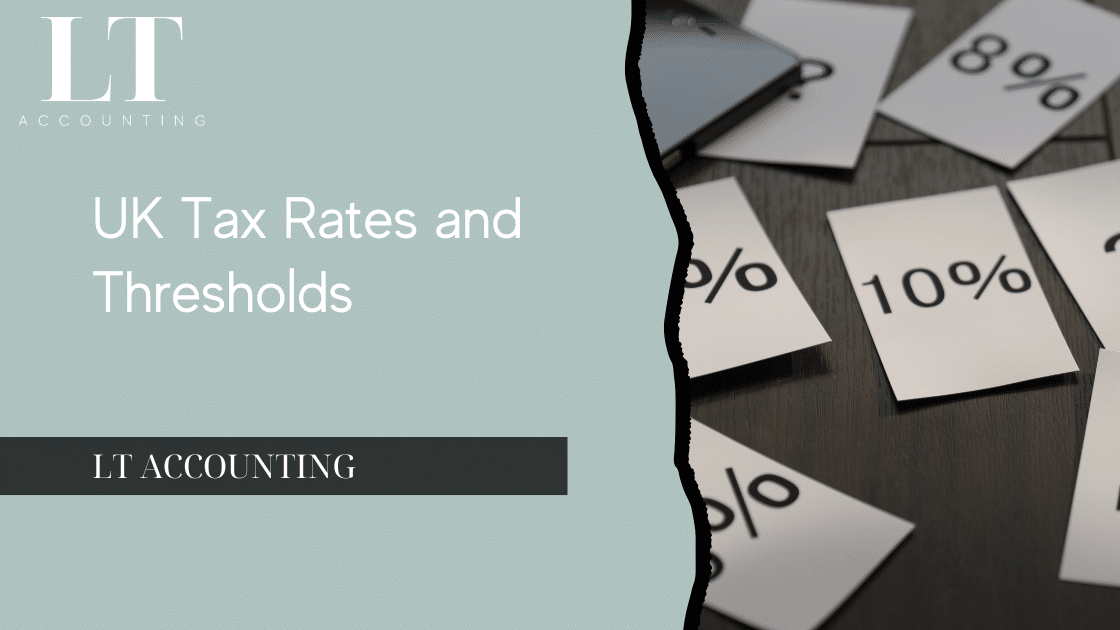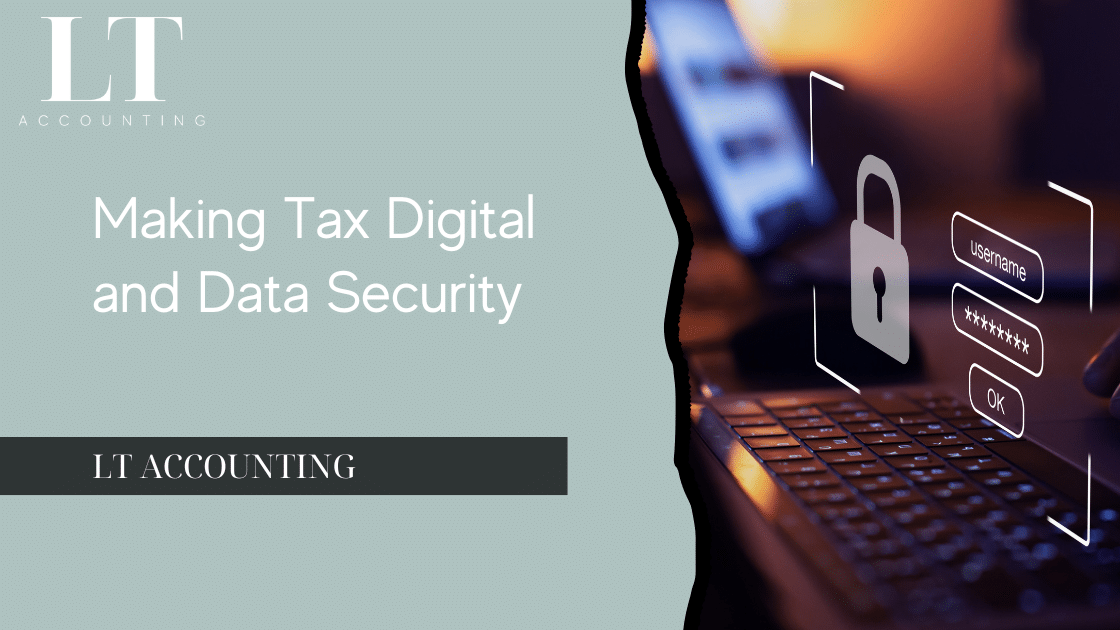Understanding UK tax can be challenging due to the variety of taxes, tax bands, thresholds, allowances, rates, and relief schemes. This guide aims to provide a comprehensive overview of the tax brackets and rates for the 2023/24 and 2024/25 tax years, explaining how different types of tax might affect your business and personal income, and how to be tax-efficient.
UK Tax Rates and Thresholds Changes?
Tax rates and allowances are typically set before the start of a new tax year and remain unchanged until the next year, although mid-year changes can occasionally occur. The UK tax year runs from 6th April to 5th April the following year. The government announces changes to tax brackets and rates through the Budget statement, with the most recent being Chancellor Jeremy Hunt’s Spring Budget 2024 on 6th March.
Personal Allowance
What is the tax-free Personal Allowance?
The personal tax allowance is the portion of income you can earn in a tax year without paying income tax. This allowance is subtracted from your total yearly earnings, meaning you only pay tax on the remaining amount.
Whether you’re employed, self-employed, or have multiple income sources, you can use the personal allowance only once per tax year.
For example, if you earn a salary from an employer, income from property, and revenue from business activities, the personal allowance will be applied to the combined total, not to each source separately.
Additionally, you might qualify for a tax-free trading allowance on the first £1,000 of income from self-employment.
How much is the Personal Allowance in 2024/25?
For the tax year 2024/25, the tax-free Personal Allowance is £12,570, unchanged from the previous year. You will pay income tax on any earnings above this threshold.
The Personal Allowance for High Earners
For individuals earning over £100,000, the Personal Allowance decreases by £1 for every £2 of income above £100,000, becoming zero for incomes of £125,140 or more.
Income Tax
How do income tax thresholds, rates, and allowances work?
Income tax in the UK is structured around thresholds, rates, and allowances designed to ensure a progressive taxation system. Here’s how each component functions:
Thresholds: Income tax thresholds define the bands of income that are taxed at different rates. These thresholds are set annually by the government. As your income increases, the amount falling into each successive band is taxed at a higher rate. For instance, income up to the personal allowance threshold is tax-free, while earnings above this are taxed according to the specified bands for that tax year.
Rates: The tax rate is the percentage applied to the portion of your income within each threshold. The UK operates a tiered system where different portions of your income are taxed at varying rates. Typically, there are three main rates: basic, higher, and additional. Each rate corresponds to a specific income band, ensuring that higher earners pay a higher percentage of their income in tax.
Allowances: Tax allowances reduce the amount of income that is subject to tax. The most common is the Personal Allowance, which is the amount of income you can earn before you start paying income tax. Other allowances include the Marriage Allowance and Blind Person’s Allowance, each providing additional tax-free income based on eligibility.
Marginal Bands: The UK uses a marginal tax system, meaning you only pay the higher rate on the portion of your income that exceeds the threshold for that band. For example, if your income crosses from the basic rate into the higher rate, only the income above the basic rate threshold is taxed at the higher rate, not your entire income.
To summarise, income tax in the UK is calculated based on a progressive system of thresholds and rates, with various allowances available to reduce the taxable portion of your income. Understanding how these components interact can help you better manage your finances and potentially reduce your tax liability.
2023/24 and 2024/25 Income Tax Rates and Thresholds in England, Wales, and Northern Ireland
| Tax Band | 2023/24 Threshold | 2024/25 Threshold | Tax Rate |
|---|---|---|---|
| Personal Allowance | £0 – £12,570 | £0 – £12,570 | 0% |
| Basic Rate | £12,571 – £50,270 | £12,571 – £50,270 | 20% |
| Higher Rate | £50,271 – £125,140 | £50,271 – £125,140 | 40% |
| Additional Rate | £125,140 upwards | £125,140 upwards | 45% |
2023/24 and 2024/25 Income Tax Rates and Thresholds in Scotland
| Tax Band | 2023/24 Threshold | 2024/25 Threshold | Tax Rate |
|---|---|---|---|
| Personal Allowance | £0 – £12,570 | £0 – £12,570 | 0% |
| Starter Rate | £12,571 – £14,732 | £12,571 – £14,876 | 19% |
| Basic Rate | £14,733 – £25,688 | £14,877 – £26,561 | 20% |
| Intermediate Rate | £25,689 – £43,662 | £26,562 – £43,662 | 21% |
| Higher Rate | £43,663 – £125,140 | £43,663 – £75,000 | 42% |
| Advanced Rate | Not in use | £75,001 – £125,140 | 45% |
| Top Rate | Over £125,140 | Over £125,140 | 47% |
National Minimum Wage (NMW) and National Living Wage (NLW)
From April 2024, the National Living Wage will apply to employees aged 21 and older, with an increased rate of £11.44 per hour.
| Employee Age | 2023/24 Rate | 2024/25 Rate |
|---|---|---|
| Apprentices and Under 18s | £5.28 | £5.28 |
| 18 to 20 years old | £7.49 | £7.49 |
| 21 years and older | £10.18 | £11.44 |
National Insurance
National Insurance Contributions (NICs)
NICs are payable by individuals aged 16 or over, up until they reach State Pension age. The contributions are based on income and employment status and can affect eligibility for certain benefits and the state pension.
Class 1 (Primary) National Insurance for Employees
| Threshold | 2023/24 Rate | 2024/25 Rate |
|---|---|---|
| Lower Earnings Limit (LEL) | £123 weekly / £6,396 annually | £123 weekly / £6,396 annually |
| Primary Threshold | £242 weekly / £12,570 annually | £242 weekly / £12,570 annually |
| Upper Earnings Limit (UEL) | £967 weekly / £50,270 annually | £967 weekly / £50,270 annually |
Class 1 (Secondary) National Insurance for Employers
Employers pay an additional Class 1 (Secondary) National Insurance on the wages they pay to employees.
| Threshold | 2023/24 Rate | 2024/25 Rate |
|---|---|---|
| Secondary Threshold | £175 weekly / £9,100 annually | £175 weekly / £9,100 annually |
| Rate | 13.8% | 13.8% |
National Insurance Employment Allowance
Employers can claim relief on their National Insurance bill using the Employment Allowance, which remains at £5,000 for 2024/25.
Class 2 and Class 4 National Insurance for Self-Employed People
Class 2 National Insurance will be abolished from April 2024. Class 4 National Insurance rates will be adjusted as follows:
| Threshold | 2023/24 Rate | 2024/25 Rate |
|---|---|---|
| Small Profits Threshold (SPT) | £6,725 | £6,725 |
| Lower Profits Limit (LPL) | £12,570 | £12,570 |
| Upper Profits Limit (UPL) | £50,270 | £50,270 |
| Class 2 Rate | £3.45 per week | Abolished |
| Class 4 Rate (LPL to UPL) | 9% | 6% |
| Class 4 Rate (Above UPL) | 2% | 2% |
Capital Gains Tax (CGT)
What is Capital Gains Tax?
Capital Gains Tax (CGT) is a tax on the profit (or gain) made when you sell or ‘dispose of’ an asset that has increased in value. It’s important to note that CGT is not charged on the total amount received from the sale, but rather on the gain – the difference between the original purchase price and the amount you sold it for.
Disposing of an Asset: Disposing of an asset can occur in several ways, not just through selling it. It includes gifting the asset to someone else, transferring ownership, exchanging it for another asset, or receiving compensation for its loss (such as insurance payouts).
Assets Subject to CGT: Common assets that may attract Capital Gains Tax include property (that is not your primary residence), shares and investments, business assets, and valuable personal possessions like artwork, antiques, and jewellery. Certain assets, such as your main home (provided it hasn’t been used for business purposes), personal cars, and personal belongings worth less than £6,000, are usually exempt from CGT.
Annual Exempt Amount: Each tax year, there is a tax-free allowance known as the Annual Exempt Amount (AEA). For 2024/25, this is £3,000 for individuals and £1,500 for trustees. If your total gains in the tax year are below this threshold, you won’t have to pay CGT. If your gains exceed the AEA, you will only pay tax on the amount above this limit.
CGT Rates: The rate at which CGT is charged depends on your overall taxable income. Basic rate taxpayers generally pay 10% on their gains, while higher and additional rate taxpayers pay 20%. However, gains from residential property (other than your main home) and carried interest are taxed at 18% and 28% respectively for basic and higher/additional rate taxpayers.
Reliefs and Exemptions: There are several reliefs available that can reduce your CGT liability. These include Business Asset Disposal Relief (formerly Entrepreneur’s Relief), which offers a lower tax rate on gains from qualifying business assets, and Private Residence Relief, which can reduce or eliminate CGT on your main home under certain conditions.
Calculating and Reporting CGT: To calculate your CGT, you need to determine the gain on each asset by subtracting the purchase price (plus any allowable costs like improvements and legal fees) from the sale price. You then deduct any available reliefs and the Annual Exempt Amount from your total gains. The remaining amount is subject to CGT at the applicable rate. CGT is reported and paid through the Self Assessment tax return system, and for property sales, you must report and pay the tax within 30 days of completion.
Understanding Capital Gains Tax is crucial for managing your investments and planning for potential tax liabilities. Always consider seeking professional advice to ensure compliance and optimise your tax position.
2024/25 Capital Gains Tax Annual Exempt Amount
| Category | 2023/24 Threshold | 2024/25 Threshold |
|---|---|---|
| Individuals | £6,000 | £3,000 |
| Trustees | £3,000 | £1,500 |
Capital Gains Tax Rates
| Taxpayer Type | 2023/24 Rate | 2024/25 Rate |
|---|---|---|
| Basic Rate (Residential Property) | 18% | 18% |
| Basic Rate (Other Assets) | 10% | 10% |
| Higher Rate (Residential Property) | 28% | 24% |
| Higher Rate (Other Assets) | 20% | 20% |
| Trustees (Residential Property) | 28% | 28% |
| Trustees (Other Assets) | 20% | 20% |
Corporation Tax
Who Pays Corporation Tax?
Corporation Tax is a tax on the profits of limited companies and certain organisations, including clubs, societies, associations, and unincorporated entities operating in the UK. Here’s a detailed look at who is liable to pay Corporation Tax:
Limited Companies: All UK-resident limited companies must pay Corporation Tax on their worldwide profits. This includes profits from trading, investments, and the sale of assets for more than they cost (capital gains).
Foreign Companies with UK Branches or Offices: Companies incorporated outside the UK but operating within the UK through a branch or office must pay Corporation Tax on the profits earned from their UK activities.
Unincorporated Associations: Organisations like sports clubs, community groups, and other not-for-profit entities that are not set up as companies may still be liable for Corporation Tax if they make a profit from trading activities.
Housing Associations: Many housing associations are required to pay Corporation Tax on their trading profits and any gains from selling properties or other assets.
Public Corporations: Some public sector organisations, like certain trading subsidiaries of local authorities, are also liable for Corporation Tax.
Entities Subject to Corporation Tax:
- Profits from Trading: This includes any income earned from business activities.
- Investments: Interest received, dividends, and other investment income are subject to Corporation Tax.
- Capital Gains: Profits from selling or disposing of assets, such as property, equipment, or shares, that have increased in value.
Calculating Corporation Tax: Companies must calculate their Corporation Tax liability based on their accounting period, which is usually 12 months. They must keep detailed financial records to accurately report income, expenses, and gains.
Filing Requirements: Companies are required to file a Company Tax Return with HM Revenue and Customs (HMRC). This involves preparing statutory accounts and a detailed computation of the Corporation Tax due. The return must be submitted online within 12 months of the end of the accounting period.
Payment Deadlines: The deadline for paying Corporation Tax is generally nine months and one day after the end of the company’s accounting period. However, larger companies with annual profits exceeding £1.5 million are required to make quarterly instalment payments.
Reliefs and Allowances: Companies can reduce their Corporation Tax liability through various reliefs and allowances, such as the Annual Investment Allowance (AIA), Research and Development (R&D) tax credits, and capital allowances for qualifying expenditures on business assets.
Group Relief: Companies that are part of a group can transfer losses and certain deductions between group members to optimise their overall tax position.
Understanding Corporation Tax obligations is crucial for ensuring compliance and effective financial planning. Companies should stay informed about changes in tax legislation and seek professional advice to manage their Corporation Tax efficiently.
2024/25 Corporation Tax Rates
| Profit Range | Tax Rate |
|---|---|
| Over £250,000 | 25% |
| Up to £50,000 | 19% |
| Marginal Relief | 19% to 25% |
Dividend Tax
Dividend Allowance
The dividend allowance for 2024/25 is £500, reduced from £1,000 in 2023/24.
2023/24 and 2024/25 Dividend Tax Rates
| Threshold | 2023/24 Rate | 2024/25 Rate |
|---|---|---|
| Basic Rate | 8.75% | 8.75% |
| Higher Rate | 33.75% | 33.75% |
| Additional Rate | 39.35% | 39.35% |
VAT
2024/25 VAT Registration Threshold
| Action | Threshold |
|---|---|
| Registration | £90,000 |
| Deregistration | £88,000 |
UK VAT Rates
| Rate Name | VAT Rate |
|---|---|
| Standard Rate | 20% |
| Reduced Rate | 5% |
| Zero Rate | 0% |
This detailed guide should help you navigate the complex landscape of UK taxes. For personalised advice or further assistance, consider consulting with an accounting professional or utilising online accounting services.





